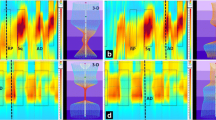Abstract
PURPOSE: The aim of this study is to assess the ability of progressive anal dilations to improve frequency of spontaneous bowel movements in patients with puborectalis syndrome (PRS). METHOD: Thirteen patients (9 females and 4 males; mean age, 37 years) with severe, chronic constipation caused by PRS were treated with daily, progressive anal dilation for a three-month period. Three dilators of 20, 23, and 27 mm in diameter were used. Dilators were inserted every day for 30 minutes (10 minutes each dilator). Patients were evaluated with anorectal manometry and defecography halfway through treatment, at the end of treatment, and six months after the end of treatment. At six months, patients also underwent physical examination. RESULTS: There was a significant improvement of weekly mean spontaneous bowel movements from zero to six (P <0.0001), and the need for laxatives decreased from 12 patients with a weekly mean of 4.6 to 2 patients once per week (P < 0.001). Enemas used before treatment by eight patients who had a weekly mean of 2.3 were, after treatment, needed only by three patients once per week (P <0.01). During straining, tone measured with anorectal manometry decreased from 93 to 62 mmHg after six months of the end of therapy (F =6.97; P<0.01), and anorectal angle measured with defecography during the strain increased from 95° to 110° (P =not significant). CONCLUSIONS: Daily progressive anal dilation should be considered as the first and most simple therapeutic approach in patients with PRS.
Similar content being viewed by others
References
Ger G-C, Wexner SD, Jorge JM, Salanga VD. Anorectal manometry in the diagnosis of paradoxical puborectalis syndrome. Dis Colon Rectum 1993;36:816–25.
Corman ML. Colon and rectal surgery. 3rd ed. Philadelphia: JB Lippincott, 1993:262–92.
Durthie GS, Bartolo DC. Anismus: the cause of constipation? Results of investigation and treatment. World J Surg 1992;16:831–5.
Hallan RI, Williams NS, Melling J, Weldron DJ, Wormack NR, Morrison JF. Treatment of anismus in intractable constipation with botulinum A toxin. Lancet 1988;2:714–6.
Jones PN, Lubowski DZ, Swash M, Henry MM. Is paradoxical contraction of puborectalis muscle of functional importance? Dis Colon Rectum 1987;30:667–70.
Kuijpers HG, Bleijenberg G. The spastic pelvic floor syndrome: a cause of constipation. Dis Colon Rectum 1985;28:669–72.
Loening-Baucke V. Modulation of abnormal defecation dynamics by biofeedback treatment in chronically constipated children with encopresis. J Pediatr 1990;116:214–22.
Maria G, Anastasio G, Brisinda G, Liberatore E, Civello IM. Severe chronic constipation: our experience concerning diagnostic examinations. Coloproctology 1995;17:105–10.
Meunier P. Rectoanal dyssynergia in constipated children. Dig Dis Sci 1985;30:784–6.
Preston DM, Lennard-Jones JE. Severe constipation of young women: idiophatic slow transit constipation. Gut 1986;27:41–8.
Wasserman IF. Puborectalis syndrome (rectal stenosis due to anorectal spasm). Dis Colon Rectum 1964;7:87–98.
Yoshioka K, Keighley MR. Randomized trial comparing anorectal myectomy and controlled anal dilatation for outlet obstruction. Br J Surg 1987;74:1125–9.
Whitead WF, Chaussade S, Corazziari E, Kumar D. Report of an international workshop on management of constipation. Gastroenterol Int 1991;4:99–113.
Pinho M, Yoshioka K, Keighley MR. Long term results of anorectal myectomy for chronic constipation. Br J Surg 1989;76:1163–4.
Barnes PR, Hawley PR, Preston DM, Lennard Jones JE. Experience of posterior division of the puborectalis muscle in the management of chronic constipation. Br J Surg 1985;72:475–7.
van Baal JG, Leguit P Jr, Brummelkamp WH. Relaxation biofeedback conditioning as treatment of a disturbed defecation reflex: report of a case. Dis Colon Rectum 1984;27:187–9.
Weber J, Ducrotte Ph, Touchais JY, Roussignol C, Denis Ph. Biofeedback training for constipation in adults and children. Dis Colon Rectum 1987;30:844–6.
Wexner SD, Cheepe JD, Jorge JM, Heymen J, Jagelman DG. Prospective assessment of biofeedback for the treatment of paradoxical puborectalis contraction. Dis Colon Rectum 1992;35:145–50.
Bottini G, Maria G, Mattana C, Anastasio G, Pescatori M. Il dilatatore anale nella terapia conservativa della ragade. Riv Ital Colonproct 1990;9:61–6.
Author information
Authors and Affiliations
About this article
Cite this article
Maria, G., Anastasio, G., Brisinda, G. et al. Treatment of puborectalis syndrome with progressive anal dilation. Dis Colon Rectum 40, 89–92 (1997). https://doi.org/10.1007/BF02055688
Issue Date:
DOI: https://doi.org/10.1007/BF02055688




